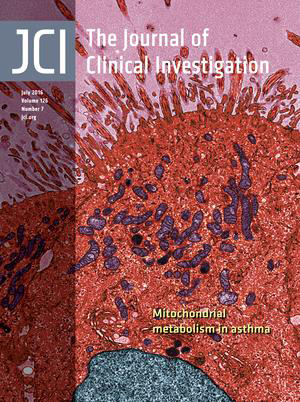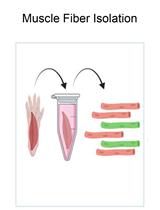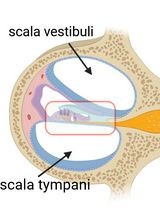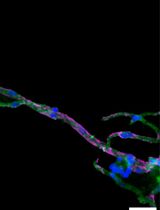- EN - English
- CN - 中文
Analysis of the Virulence of Uropathogenic Escherichia coli Strain CFT073 in the Murine Urinary Tract
小鼠泌尿系统中CFT073致病性大肠杆菌的毒力分析
发布: 2017年02月05日第7卷第3期 DOI: 10.21769/BioProtoc.2129 浏览次数: 10931
评审: Andrea PuharMigla MiskinyteAnonymous reviewer(s)
Abstract
This urinary tract infection model was used to monitor the efficacy of a new virulence factor of the uropathogenic Escherichia coli strain CFT073 in vivo. The new virulence factor which we designated TIR-containing protein C (TcpC) blocks Toll-like receptor signaling and the NLRP3 inflammasome signaling cascade by interacting with key components of both pattern recognition receptor systems (Cirl et al., 2008; Waldhuber et al., 2016). We infected wild type and knock-out mice with wildtype CFT073 and a mutant CFT073 strain lacking tcpC. This protocol describes how the mice were infected, how CFT073 was prepared and how the infection was monitored. The protocol was derived from our previously published work and allowed us to demonstrate that TcpC is a powerful virulence factor by increasing the bacterial burden of CFT073 in the urine and kidneys. Moreover, TcpC was responsible for the development of kidney abscesses since infection of mice with wildtype but not tcpC-deficient CFT073 mutants caused this complication.
Keywords: Uropathogenic Escherichia coli (致病性大肠杆菌)Background
Urinary tract infections (UTIs) are some of the most common bacterial infections worldwide (Dielubanza and Schaeffer, 2011) and are predominantly caused by uropathogenic Escherichia coli (UPEC) (Zhang and Foxman, 2003). There is a high rate of recurrent infections (Dielubanza and Schaeffer, 2011) and also an increase in the emergence of antibiotic resistant E. coli strains (Eurosurveillance editorial, 2015). Therefore the understanding of host and bacterial factors in the pathophysiology of urinary tract infections is of high relevance in order to develop new therapeutic agents.
The murine UTI model system is the primarily used animal model system to study the pathogenicity of UPEC isolates and bacterium-host interactions and to identify underlying molecular mechanism. Besides the murine UTI model system, other animal model systems like porcine, avian, zebra fish and nematodes exist, which have been demonstrated to be useful for investigating UTIs. However, these models are associated with one or several limitations and disadvantages such as no possibility for genetic modification, the lack of a vertebrate-like immune system and/or urinary tract system or high costs. In addition to animal model systems cell culture based systems with primary immune cells or immortalized urinary tract tissue-derived cells are available. In vitro culture methods can be used to analyze UPEC interactions with host cells but they, of course, cannot reflect the complexity of the host environment involving a number of different cell types, tissue architecture and host defense mechanisms. Mice have much in common with humans including conserved immunological factors and a similar urinary tract system. Further, the availability of a variety of genetically distinct mouse strains to assess the impact of the genetic background makes the murine mouse model very accessible to study host-pathogen interactions in order to develop therapeutic agents.
Materials and Reagents
- Microcentrifuge tubes (1.5 ml for urine collection and 2.0 ml for tissue homogenization)
- 1 ml syringes (BD, catalog number: 309628 )
- 27 G needles (BD, catalog number: 305136 )
- ELISA plates (Nunc MaxiSorp® flat-bottom 96 well plate) (Sigma-Aldrich, catalog number: M9410 )
- Unfrosted or frosted glass slides (Thermo Fisher Scientific, Fisher Scientific, catalog number: 10149870 )
- poly-L-lysine-coated glass slides (Thermo Fisher Scientific, Thermo ScientificTM, catalog number: P4981 )
- Coverslips 60 x 24 mm
- Mice
Only female mice were used for the UTI infection model because the urethra in male mice is extremely difficult to catheterize due to its anatomy. The following strain of mice at an age of 8 to 16 weeks was used:
C57BL/6
The following knock-out mice were successfully used in the model to study the relevance of a number of host-defense genes but these mice are optional and not required to generate the model:
Tlr4−/−
Myd88−/−
Trif−/−
TrifLps2/Lps2
Il-1β−/−
Irf3−/−
Note: All knock-out mice were at least 8x backcrossed to C57BL/6 mice. All mice were bred and housed in specific pathogen free conditions. Mice were only used upon permission of the local animal experimental ethics committee. - Bacteria
- UPEC strain CFT073, provided by ATCC (ATCC, catalog number: 700928 )
- tcpC-deficient CFT073 tcpC::kan, generated in the lab using the method described by Datsenko/Wanner (Datsenko and Wanner, 2000).
- Complemented mutant strain CFT073 tcpC::kan+pTcpC, the plasmid was generated as described (Cirl et al., 2008).
- UPEC strain CFT073, provided by ATCC (ATCC, catalog number: 700928 )
- Ice
- Dry ice
- Ethanol (70%)
- Isoflurane (Abbott Laboratories, Forene®, catalog number: 506949 )
- Ketamine (Ketaminol®, catalog number: 511519 )
- Xylazine (Rompun®, catalog number: 0 22545 )
- 0.9% NaCl
- Phosphate-buffered saline (PBS) (Sigma-Aldrich, catalog number: D8662 )
- Gentamicin
- Tissue-Tek® O.C.T. compound (SAKURA FINETEK, catalog number: 4583 )
- Tissue-Tek® Cryomold (SAKURA FINETEK, catalog number: 4565 )
- Isopentane (Sigma-Aldrich, catalog number: PHR1661 )
- Triton X-100 (Sigma-Aldrich, catalog number: X100 )
- Normal goat serum (Agilent Technologies, catalog number: X0907 )
- Rat monoclonal antibody NIMP-R14 (1: 200) (Abcam, catalog number: ab2557 )
- Antiserum to a synthetic peptide within the PapG adhesin (1:200), produced in the laboratory
- Goat anti-rat immunoglobulins (1:200), conjugated with Alexa 488 dye (A488; 495ext/519em nm) (Thermo Fisher Scientific, InvitrogenTM, catalog number: A-11006 )
- Goat anti-rabbit immunoglobulins (1:200), conjugated with Alexa 568 dye (A568; 578ext/603em nm) (Thermo Fisher Scientific, InvitrogenTM, catalog number: A-11011 )
- Anti-NLRP3 antibody (Santa Cruz Biotechnology, catalog number: sc-66846 )
- Anti-IL-1β antibody (Abcam, catalog number: ab9722 )
- Anti-ASC antibody (Abcam, catalog number: ab155970 )
- DAPI (Sigma-Aldrich, catalog number: D9542 )
- VECTASHIELD mounting medium (Vector Laboratories, catalog number: H-1000 )
- MIP-2 quantification kit (R&D Systems, catalog number: MM200 )
- Paraformaldehyde (PFA) (Sigma-Aldrich, catalog number: P6148 )
- Tryptic soy agar (TSA) (BD, DifcoTM, catalog number: 236950 )
- LB agar (BD, catalog number: 244520 )
- Columbia 5% blood agar (BD, catalog number: 221263 )
- Sucrose (Sigma-Aldrich, catalog number: 84100 )
- Ketamine/Xylazine solution (see Recipes)
- Media for cultivation of bacteria (see Recipes)
Tryptic soy agar plates, LB, Columbia 5% blood agar - Sucrose solution (see Recipes)
- 4% paraformaldehyde (see Recipes)
Equipment
- Burker chamber
- ELISA washer
- Drop glass jar for gas anesthesia
- Biosafety hood in biosafety level 2 facility
- Curved forceps, scissors
- Soft polyethylene catheter (0.61 mm outer diameter; Clay Adams) (BD, catalog number: 427401 )
- Stomacher 80 homogenizer (Seward medical, catalog number: 0080/000/EU )
- Cryostat sections were made with a Microtome blade C-35 (FEATHER Safety Razor, model: C-35)
- Fluorescence microscopy (Olympus, model: AX60 , equipped with filter sets [excitation/emission] 495ext/519em nm and 578ext/603em nm)
- AxioCam ERc 5s camera (Zeiss, model: AxioCam ERc 5s)
- Labsystems Multiskan PLUS reader (Analytical Instruments, Golden Valley, USA)
Procedure
文章信息
版权信息
© 2017 The Authors; exclusive licensee Bio-protocol LLC.
如何引用
Waldhuber, A., Puthia, M., Wieser, A., Svanborg, C. and Miethke, T. (2017). Analysis of the Virulence of Uropathogenic Escherichia coli Strain CFT073 in the Murine Urinary Tract. Bio-protocol 7(3): e2129. DOI: 10.21769/BioProtoc.2129.
分类
微生物学 > 体内实验模型 > 细菌
免疫学 > 宿主防御 > 鼠
细胞生物学 > 组织分析 > 组织分离
您对这篇实验方法有问题吗?
在此处发布您的问题,我们将邀请本文作者来回答。同时,我们会将您的问题发布到Bio-protocol Exchange,以便寻求社区成员的帮助。
提问指南
+ 问题描述
写下详细的问题描述,包括所有有助于他人回答您问题的信息(例如实验过程、条件和相关图像等)。
Share
Bluesky
X
Copy link













